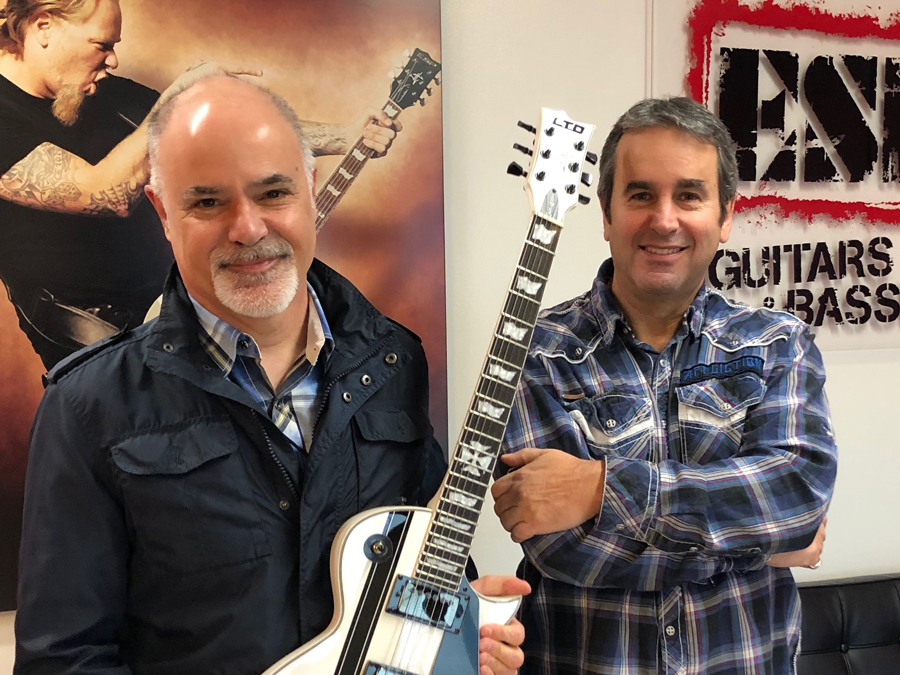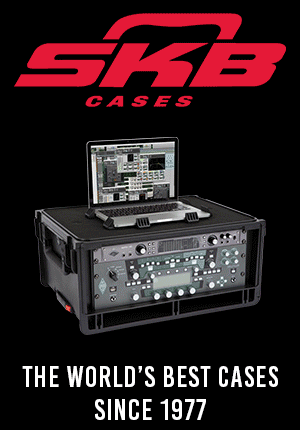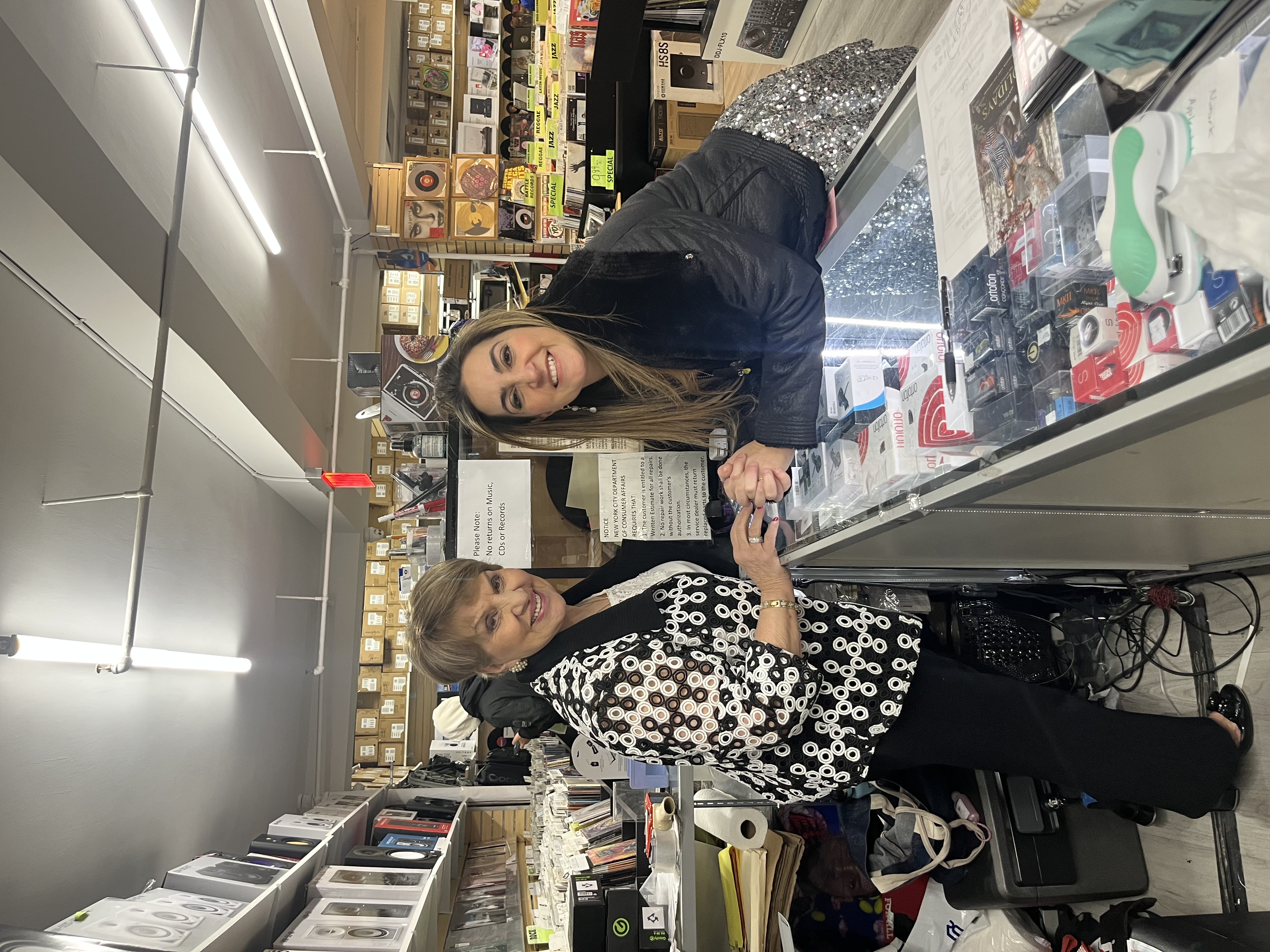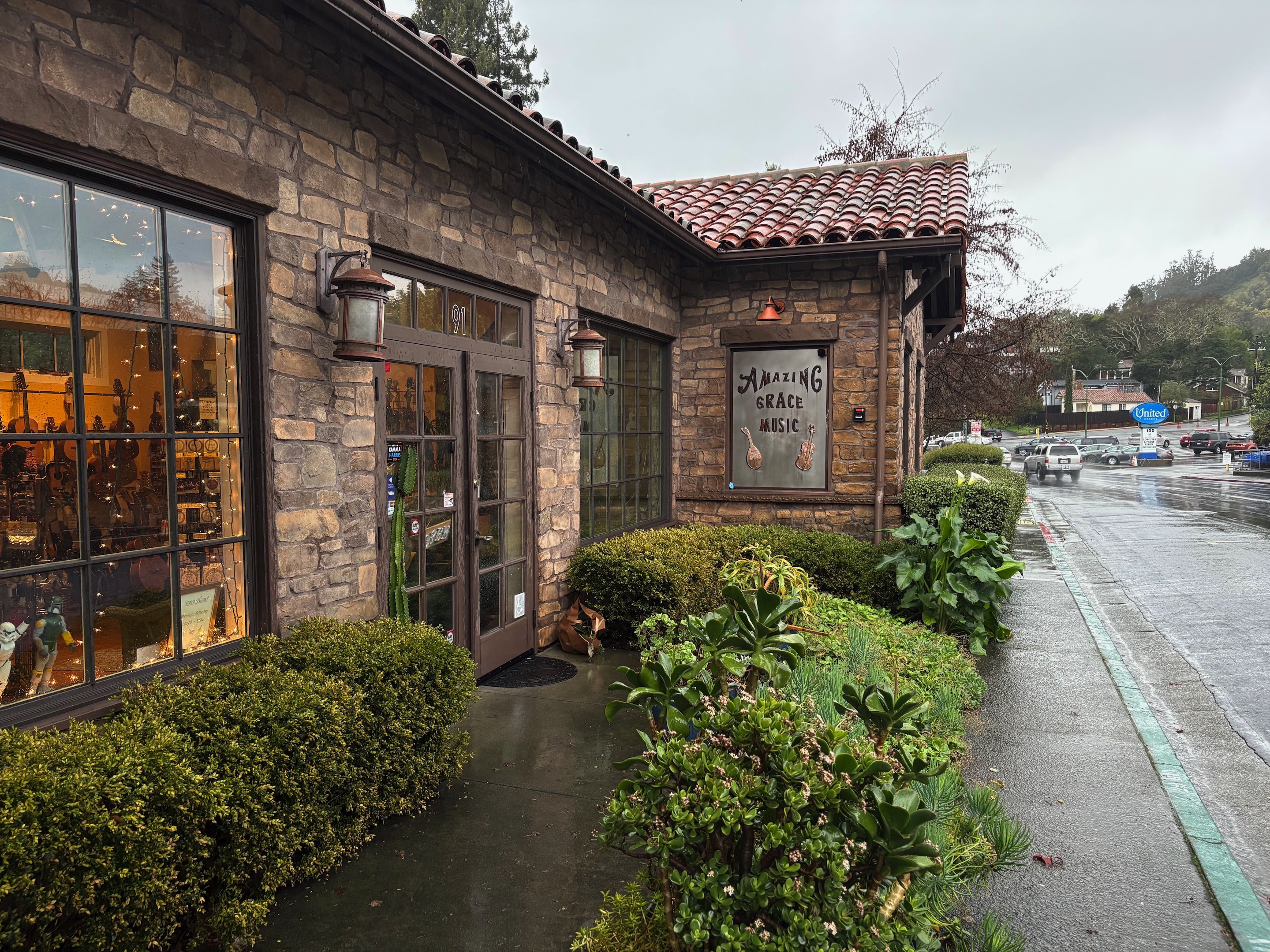
ESP’s Matt Masciandaro and Jeff Moore
ESP Guitars is arguably one of the most renowned guitar brands in metal music today. But the company’s start looked very different. Founded as a guitar repair shop by Hisatake Shibuya in Tokyo in 1975, ESP made its way to New York about 10 years after its founding when a group of about a half-dozen, including current-day CEO Matt Masciandaro, sold parts and vintage reproduction guitars to get the word out about the burgeoning guitar brand. With access to some of the top session players and touring musicians in Manhattan’s bustling mid-’80s recording scene, ESP soon began building guitars for high-profile artists around 1987, including Living Colour’s Vernon Reid, Helmet’s Page Hamilton and Kiss’ Bruce Kulick.
“We had access to great session guitarists and touring musicians in Manhattan, and we were able to receive invaluable feedback from these artists and supply them with our instruments,” Masciandaro said. “It helped us find our own identity and break out of being a parts and vintage reproduction guitar company.”
With an unparalleled artist roster and a growing distribution portfolio, ESP celebrates 45 years
ESP began to receive requests from musicians for custom designs they couldn’t get from other guitar manufacturers at the time, and its full custom shop capabilities helped it to gain a foothold among metal guitarists for its ability to design original shapes, custom finishes and neck-through body construction.
“These artists in New York wanted something different, and we were able to make that vision a reality for them, and that’s when things really started to change for ESP. We [laid down] the roots of what we are today,” Masciandaro said, adding that the launch of the high-quality but price-conscious LTD Series in 1996 further took the company to a new level. “This line of quality guitars featuring the image we had built over the first 10 or 20 years was now accessible to all budgets.”
Music for the Masses
Decades later, ESP is still supplying guitars to some of the top names in not only metal but all of music. With its U.S. headquarters now located in North Hollywood, California, ESP’s artist roster reads like a who’s who of rock guitarists, including Metallica’s James Hetfield and Kirk Hammett as well as guitarist George Lynch and the Rolling Stones’ Ron Wood.
Educational outreach at music festivals around the world, including Hellfest in France, After Shock in Sacramento, and Sonic Temple in Columbus, Ohio, help ESP usher in a new generation of music makers.
“We’ll have a booth at these shows where attendees can meet the artists, check out the guitars that the artists just played on stage and even buy the same guitar,” said Jeff Moore, ESP’s senior vice president. “Nowadays, these music festivals are two- or three-day events that include whisky tasting, product vendors and car exhibitions — all kinds of additional activities besides the music. Having a festival booth is a perfect fit and lets us engage with the end-user. It gets guitars in the hands of potential players.”
Branching Out
With strong roots in the electric guitar market, ESP branched out five years ago into the acoustic side, becoming the exclusive U.S. distributor for fellow Japanese brand Takamine Guitars.
“There’s a very high level of craftsmanship that goes into Takamine’s instruments that we recognized to be on par with ESP,” Moore said. “They’ve had a robust artist roster for decades, and that’s a testiment to their brand, so we were excited to take on their distribution.”
ESP’s distribution portfolio grew again in 2019 when it struck deals with acoustic brand Avante by Veillette and German-based Engl amplifiers. “With Engl, the timing was right, and we saw a great opportunity to expand into amplification,” Moore said. “We’re finishing up our first year with them, and we’ve seen great success. It pairs well with ESP.”
Reflecting on 45
As ESP continues to grow its footprint in the guitar market, CEO Masciandaro said it’s the company’s high-quality standards that have kept it going strong for nearly half a century.
“To this day, our quality standards are our top priority,” Masciandaro said. “Since the very beginning, we’ve always welcomed valuable input along the way from ESP customers and professional artists, helping us stay in-sync with the changing demands and new ideas. Maintaining the ability to adapt quickly has always been an edge.” MI










